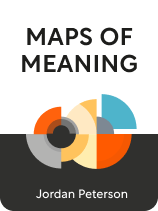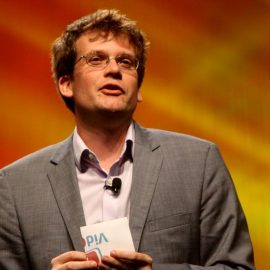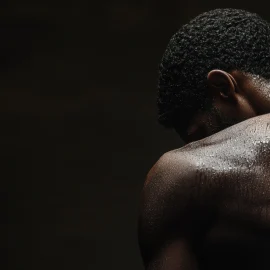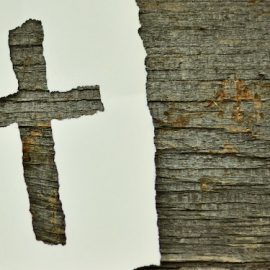

This article is an excerpt from the Shortform book guide to "Maps of Meaning" by Jordan Peterson. Shortform has the world's best summaries and analyses of books you should be reading.
Like this article? Sign up for a free trial here.
In giving up the myths of our ancestors, have we lost something vital to the human experience? Without myths, how can we frame our basic moral beliefs?
In Maps of Meaning: The Architecture of Belief, Jordan Peterson contends that myths are vital to how humans confront and make sense of a chaotic world. He warns that, by turning a blind eye to the value of our mythological inheritance, we run the risk of denying our capacity for good and evil.
Continue reading for an overview of this intriguing book.
Overview of Maps of Meaning: The Architecture of Belief
In our modern age of science and reason, we’ve turned our backs on the myths of old. The majority of people no longer believe in a literal divine creation, much less in stories of heroes slaying monsters or of gods fighting battles against titans.
Creation stories and heroic sagas aren’t merely escapist fantasy—they’re important mental models passed down for generations that teach us how to face the unknown and incorporate new ideas into our lives. In Maps of Meaning: The Architecture of Belief, Peterson argues that the enemy of myth isn’t science, but ideology, which twists mythology’s purpose to self-serving, harmful ends.
At a young age, Peterson discarded religion as being irrational, but he also found that “reason-based” philosophies were inherently flawed and simplistic. Knowing that humans aren’t rational creatures, he set out to uncover the process by which people form beliefs and how those beliefs shape the world we live in. He discovered that myths from all around the world share certain common structures that reflect how the brain processes information. Our myths teach us how and why we hold our most cherished beliefs, as well as when to change them.
We’ll look at where science and myth overlap and how the findings of neuroscience are echoed in the structure of our most ancient tales. We’ll discuss what the iconic characters of myth represent, as well as mythology’s two main story structures: the creation myth and the heroic quest. Finally, we’ll look at what myth teaches about the process of human growth, as well as Peterson’s belief that understanding myths can lead to a richer, more meaningful life.
Science and Myth
To begin, Peterson establishes that mythological and scientific thinking aren’t meant to achieve the same goals. The human experience is both objective and subjective—science is essential for understanding objective reality, but myth determines the subjective value of the world around us.
Peterson claims that it’s impossible for the human mind to look at an object or an event solely in terms of its physical properties. When abstracted into the larger group of narratives we use to interpret the world at large, the stories that give meaning to everything around us constitute what we call “myth.” Peterson writes that from the mythic point of view, our mind classifies everything in terms of its meaning: how it prompts us to act.
Meaning and Experience
Our minds create models of the world based on both our present environment and a desired future state. When something interrupts the flow from the present to the future, our brain is forced to come up with a solution, a new “map” to get us from here to there. Peterson explains how this problem-solving process works inside the human brain, how our maps of past experience give meaning to the present, and how the cumulative lessons of experience become abstracted into the larger myths that shape our lives.
From Stories to Myths
We’re born with the mental problem-solving process as part of how our brains biologically function, but we learn our first stories by watching our parents. Through them, we absorb our family’s rules—the left brain verbalized stories—without having to go through the right brain’s creative process. Our family, and later society at large, gives us a basic storytelling toolkit for deciphering the big, scary world.
A group’s collective solutions to problems become encoded in a narrative passed between generations. Because there are commonalities to all human experience—birth, life, change, and death—the oldest myths from all over the world share the same building blocks.
Peterson is careful to distinguish between myths, which make room for the totality of human experience, and ideologies, which appropriate mythological concepts in support of a limited, toxic worldview.
The Basic Characters of Myth
The characters in our most primal myths represent the three broadest elements of human existence—the known world, the unknown, and the process of discovery. Each has creative and destructive potential. This, says Peterson, is a crucial detail. Acknowledging that everything in life has this duality is important to any complete moral system, which is what mythology exists to provide.
The Dragon: The Primordial Unknown
The first aspect of human existence is that of the vast and terrifying unknown, everything that’s out there off the edge of the map. In myth, this realm of mystery is symbolized by the Dragon. Often pictured as an ouroboros—a serpent devouring its tail—the Dragon represents both the threatening nature of what we don’t know as well as its potential as the source of all new things.
The Dragon appears throughout history as a wild force of nature that has to be tamed or destroyed by the Hero for civilization to exist.
The Mother: Creator and Destroyer
While the Dragon represents the vast unknowns that exist outside of human comprehension, the Mother represents the unknowns that people face throughout their lives, such as the mysteries of nature or the uncertainties of human interaction. The immediate image that springs to mind is Mother Nature.
The female body, Peterson says, is the gateway between the world we’re born into and the nothingness from which we came. Thus we find fertility goddesses woven throughout every ancient mythology.
The Father: Good King or Tyrant
The second aspect of human existence is that of the familiar, civilized world, at least as it seems in the eyes of your own culture. This is symbolized by the Father, who represents the body of cultural norms that rest upon any given mythical system. The Father, like the Mother, has two separate aspects that depend on the state of society—that of the Good King who rules wisely and fairly, and the iron-fisted Tyrant who prevents change and growth.
The Father is the figure who embodies the personality and self-image of society, like England’s King Arthur or the U.S.’s Uncle Sam. The flip side of the Good King is the Tyrant, who represents society’s power to oppress.
The Son: Hero and Rival
Peterson argues that the third aspect of human existence is our capacity for learning, discovery, and exploration. This is embodied as the mythical Son. Often portrayed as descended from the gods, the Son becomes the Hero of the story, venturing into the unknown and returning with new knowledge.
Peterson claims that the Son’s heroic aspect is a poetic abstraction of how we make sense of and give meaning to the world. In myth, the Hero leaves the safety of home, confronts the threatening outside world, and grows as a result of his hardships. Of all the various personas in myth, it is the Son’s heroic aspect that is meant to serve as a model for human behavior.
The inverse of the Hero is the Rival, who is defined by his refusal to accept the need for growth. The Rival, much like the Tyrant, seeks to deny anything that isn’t in his worldview. As the Hero’s polar opposite, the Rival embodies lies instead of truth and stagnation instead of growth.
The Basic Structures of Myth
There are two general storylines that crop up all over the world. The first is Creation Myths that provide the underlying basis for society, and the other is Heroic Quests that teach through example how people should behave.
The Creation Story
Creation stories aren’t just fanciful tales rooted in ignorance about the world’s beginning. On a deeper level, the Creation Myth explains how an ordered society arises out of prehistoric chaos. Peterson lays out the steps that creation stories take, dividing the primordial “void without form” into the separate aspects of nature, and then organizing the hierarchy of the universe. Beyond explaining where everything comes from, creation stories establish the moral structure that holds society together.
We commonly assume that someone “made up” these creation stories, but Peterson argues that isn’t the case. There are too many similarities between creation myths from all over the world. Instead, he argues that creation stories are an emergent property of human beings sharing their ideas and tribal customs through language.
The Hero’s Journey
The Hero’s Journey is similar in part to the Creation Myth, but, instead of providing a foundation for society, the hero’s story is a model for individual behavior. Peterson explains the stages of the quest, from the Hero’s origin as a youth in a troubled kingdom, to their descent into the underworld where they confront the dangers threatening society, before bringing peace back to the world. Peterson elaborates on how the steps in the Hero’s story equate to how the human brain processes new information.
The Hero leaves home and becomes an apprentice in order to find his place in the world. Once there, Peterson says they see the threat to the kingdom. The hero discovers a solution to what’s threatening the kingdom through creative thinking and a process of discovery. Once the threat has been resolved, and the world beyond has been explored and understood, the Hero returns home with his newfound knowledge and replaces the Tyrant as the kingdom’s new, benevolent Father—until the cycle repeats itself again.
The Meaning of the Journey
The Hero’s Journey is prevalent in stories throughout the ages because it’s a myth that tells us how to face the unknown and turn it into personal growth. More than that, it rings true because it reflects the path to learning that takes place in our brains. Peterson draws a one-to-one connection between the steps on the Hero’s journey and the process the mind goes through when responding to a surprise or a threat.
Myth’s Model for Life
Peterson argues that personal growth is a multistage process in which we can use the roadmap provided by myth to fully realize our potential. We begin as children in a safe family unit, then leave that family to be part of our larger society. However, once we realize that society doesn’t provide all the answers, we have to strike out and find our own path. If we don’t, if we deny the possibility of growth, we fall prey to the darker aspects of human nature (the Rival). Only by voluntarily challenging our beliefs can we develop into the best version of ourselves (the Hero).
It’s in this moment of choosing right from wrong and giving meaning to that which is outside your experience that myth has its greatest power. Myth, not science, gives us the ability to create meaning out of struggle, not by providing a set of commandments, but by showing the way to grow and persevere.
The Problem of Evil
The Hero’s Journey is a hard path to follow, and many people don’t take it. However, Peterson argues that hiding within the strict confines of culture is the root of the greatest evils perpetrated by the human race.
Active rejection of the Hero’s journey is core to the concept of evil. That rejection is the “big lie” that everything of value has already been learned, that the old, traditional ways are always best and that any new ideas that disrupt the status quo are themselves the work of evil and should be stamped out. In particular, Peterson accuses the major world religions of undermining the true value of myth by calcifying their mythological stories into anti-science dogma, leading many people to reject religion outright, along with the moral value it brings.
The big lie of evil (the path of the Rival) leads people to find comfort in simplistic ideologies. Peterson says ideologies are pseudo-myths that deny a fundamental truth—that every person, action, object, or institution has both positive and negative aspects.
When large groups of people, out of fear or desperation, refuse to look beyond the safety of their culture while viewing others as an existential threat, then people who would never consider themselves evil are able to take part in acts of tyranny and genocide.
The Moral of the Story
The secret, then, to living a moral life isn’t in following a strict set of rules. The strength of seeing the world through a mythic lens is that it helps you recognize when those rules aren’t enough. Peterson states that, by understanding the true lessons of mythology, you can inoculate yourself against ideology’s temptations while mentally preparing yourself to face the unexpected and the unfamiliar with curiosity instead of fear.
As opposed to narrow-minded views of the world, mythology teaches that all things are both creative and destructive, including ourselves.
Likewise, when you emulate the Hero’s Journey, you cultivate a sense of curiosity and wonder about the many things in life beyond the walls of your personal world. Peterson proposes that this particular spark—the willingness to set aside safety and comfort to explore the mysteries of life—is the essence of the divine that exists in each of us. By fanning the flames of curiosity, you become like the Hero, enriching yourself and the world.

———End of Preview———
Like what you just read? Read the rest of the world's best book summary and analysis of Jordan Peterson's "Maps of Meaning" at Shortform.
Here's what you'll find in our full Maps of Meaning summary:
- Why myths are vital to how humans confront and make sense of a chaotic world
- How to apply the lessons of myth to live a more well-rounded life
- How the findings of neuroscience are echoed in the structure of our most ancient tales






